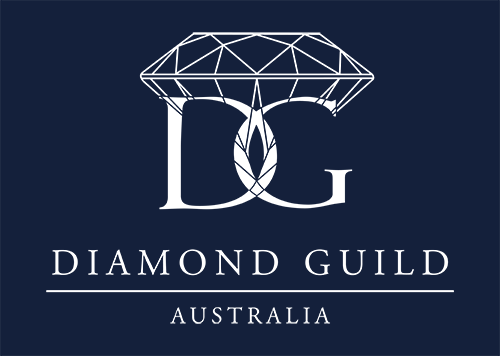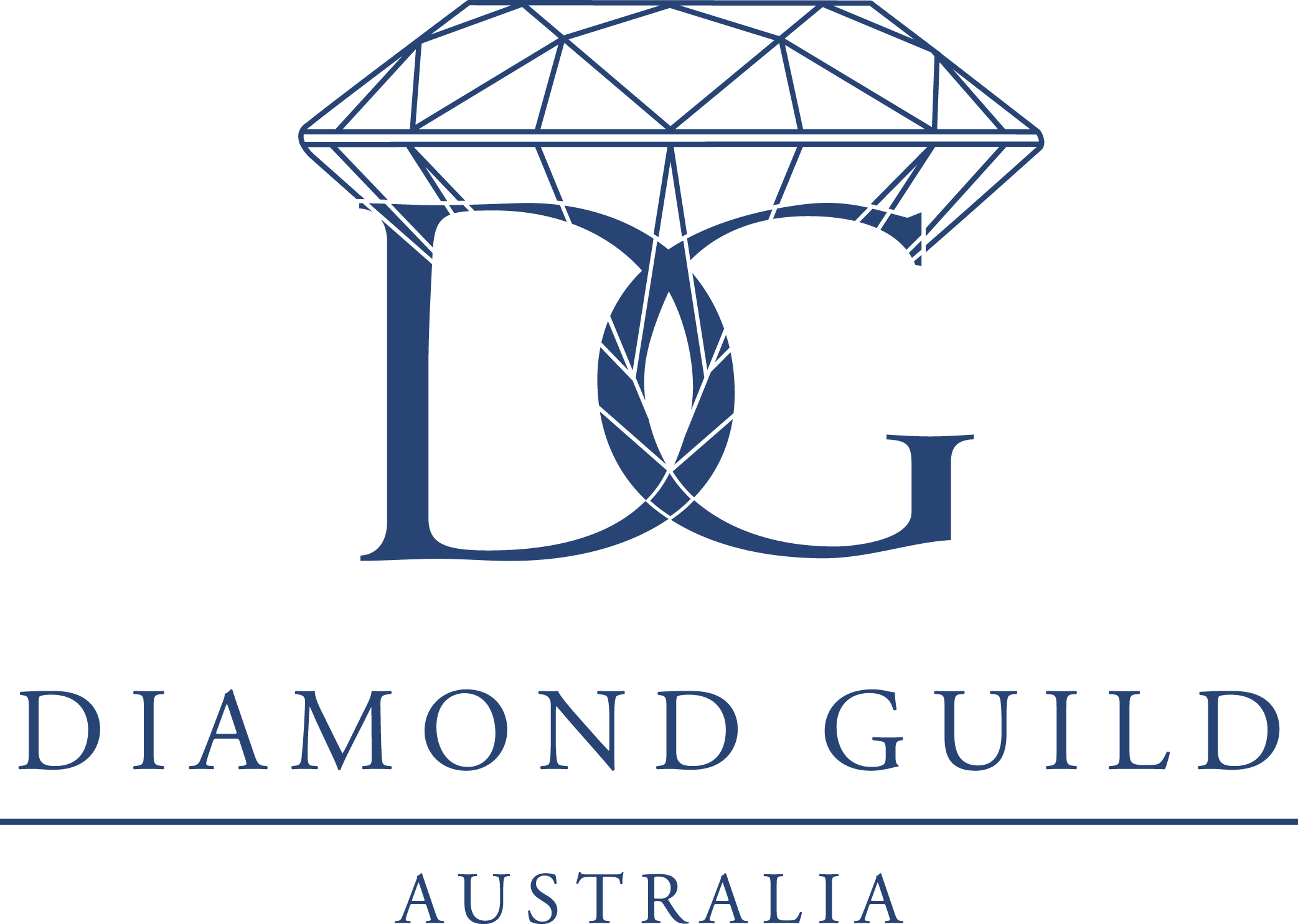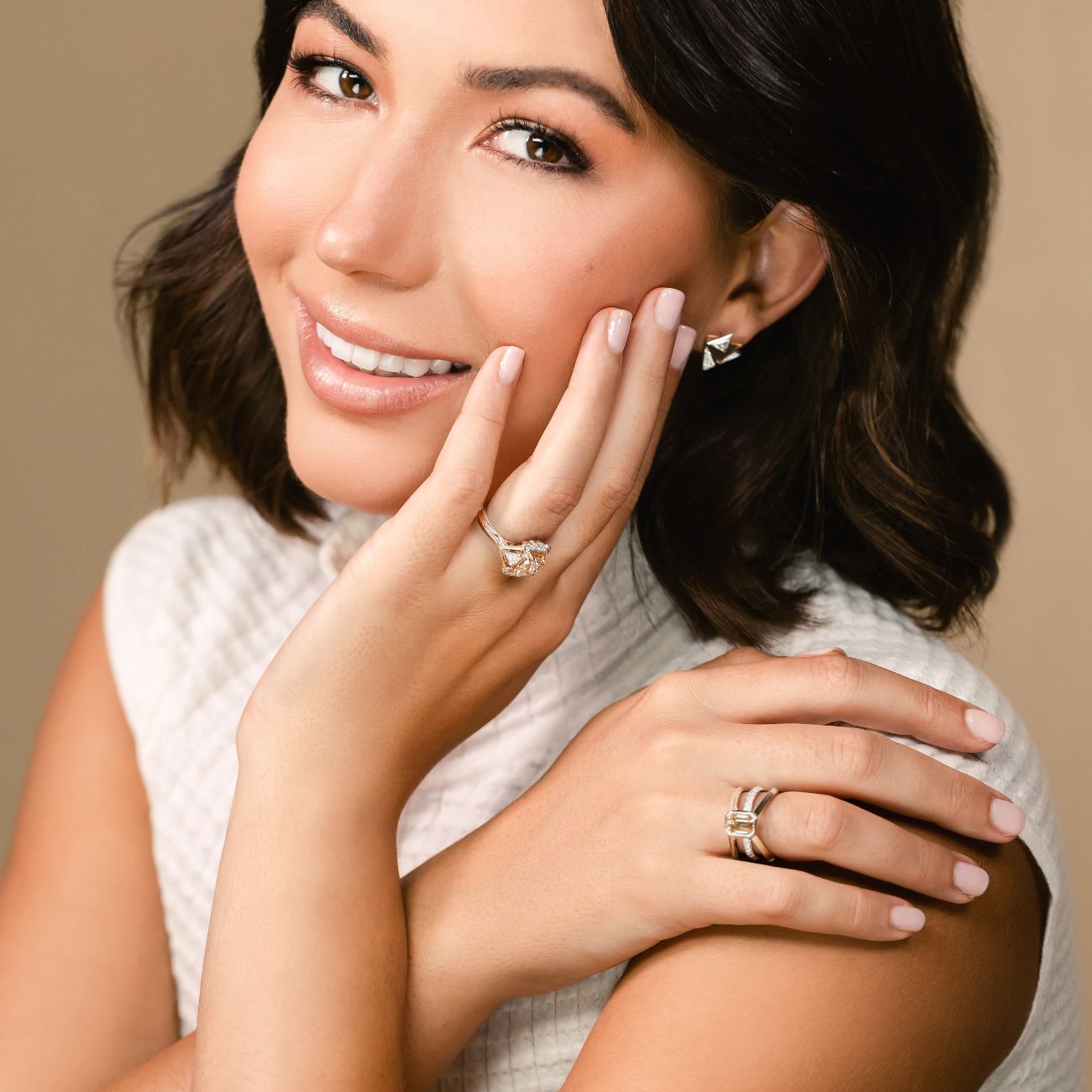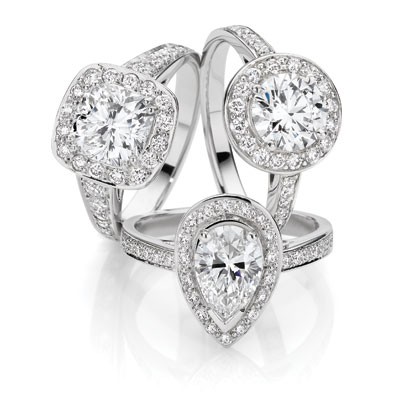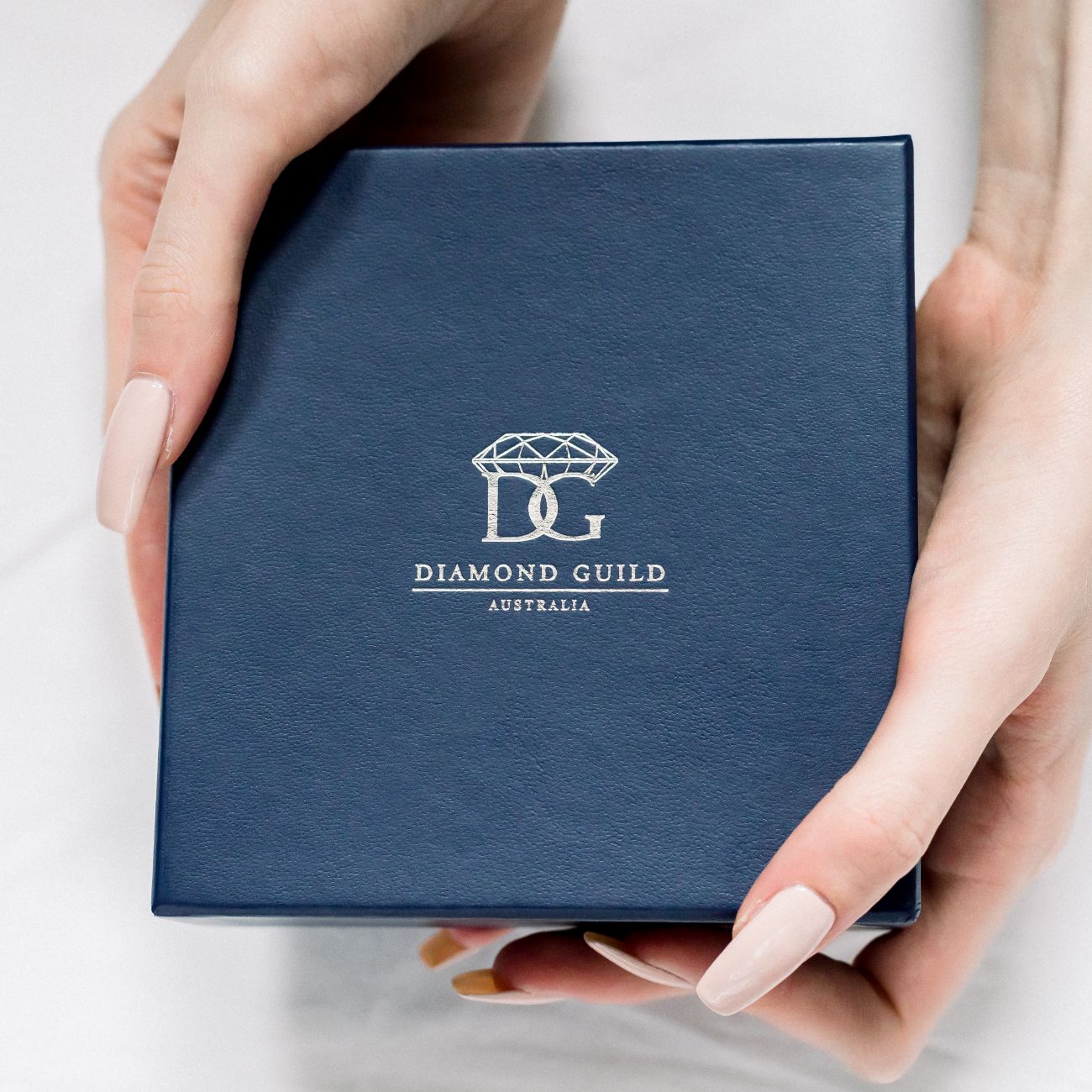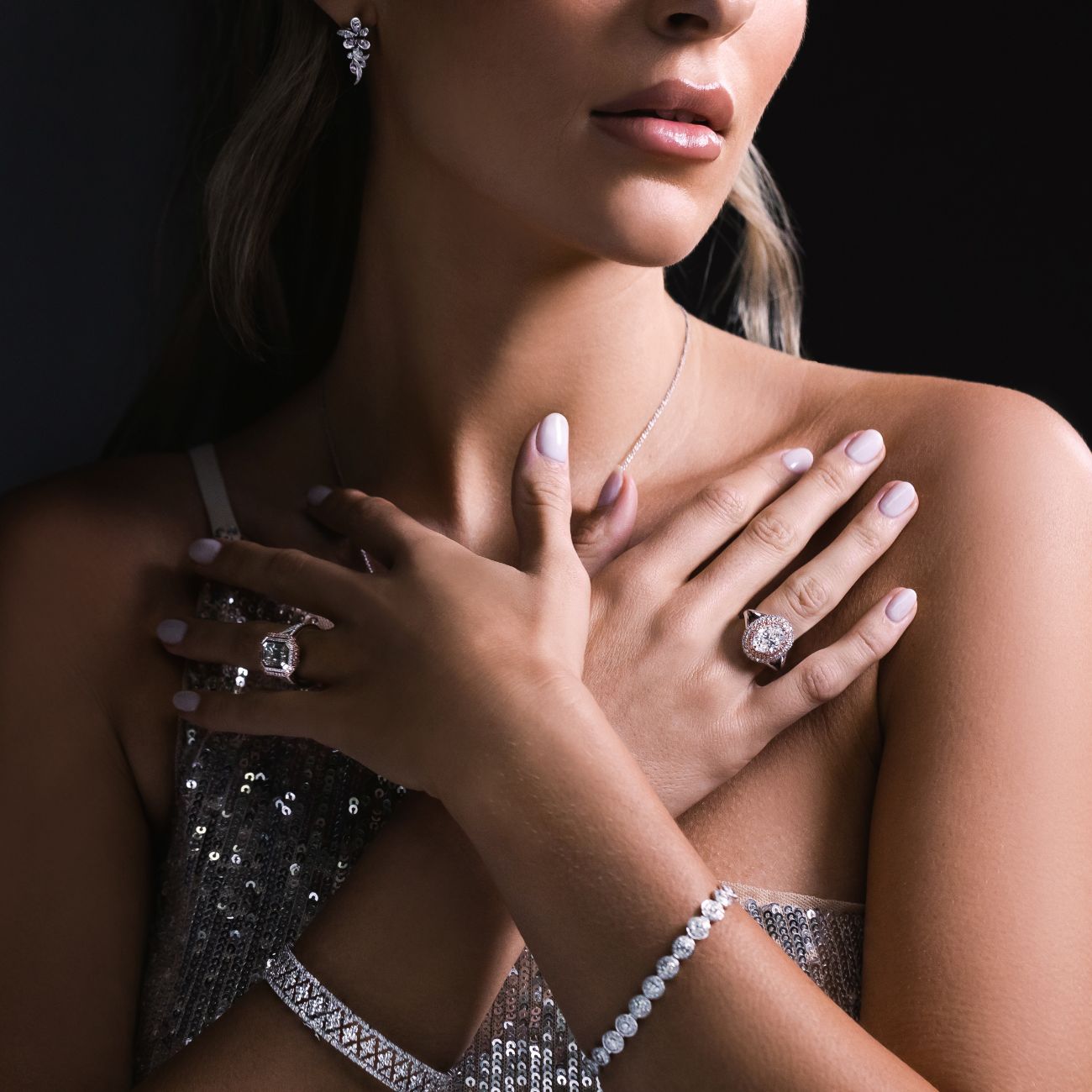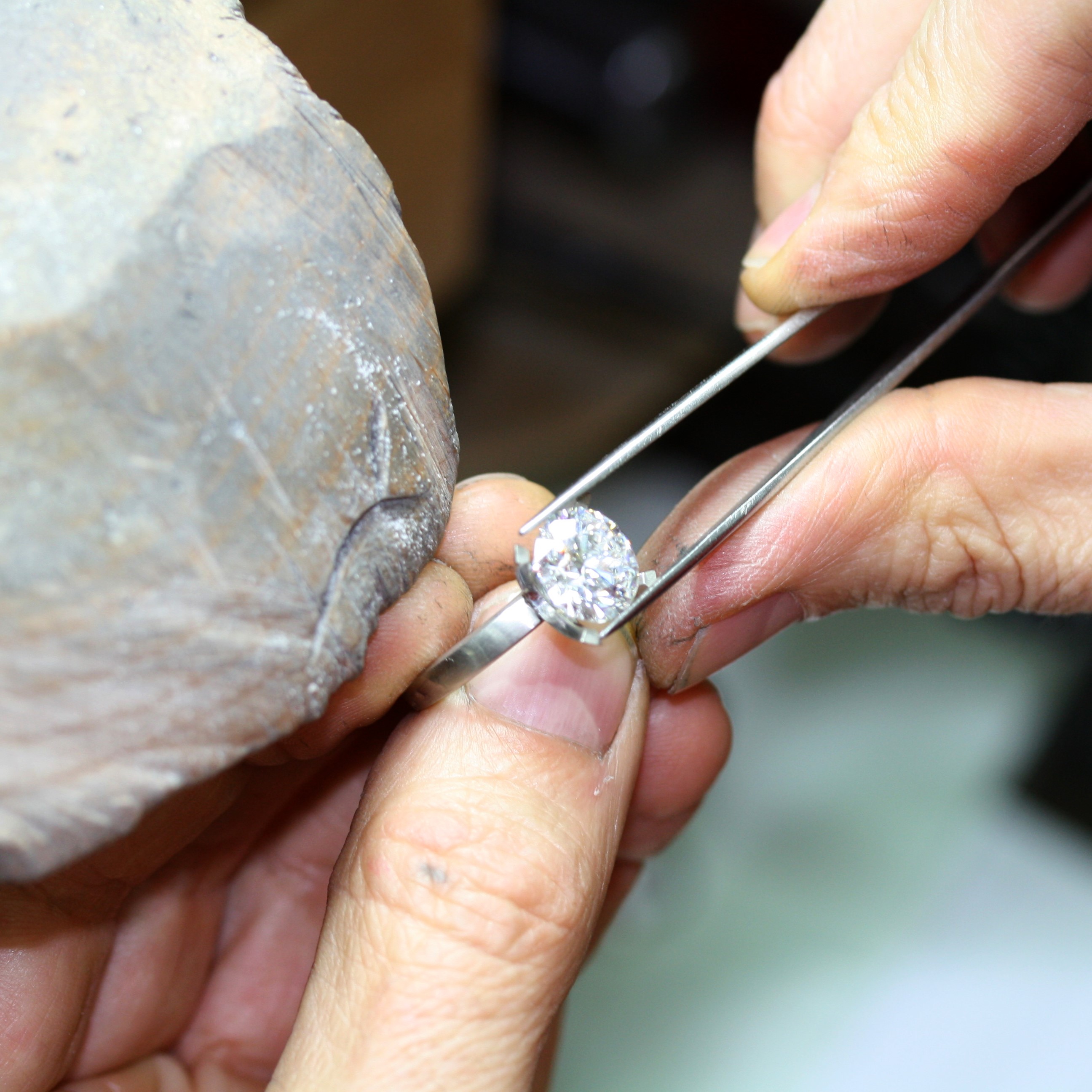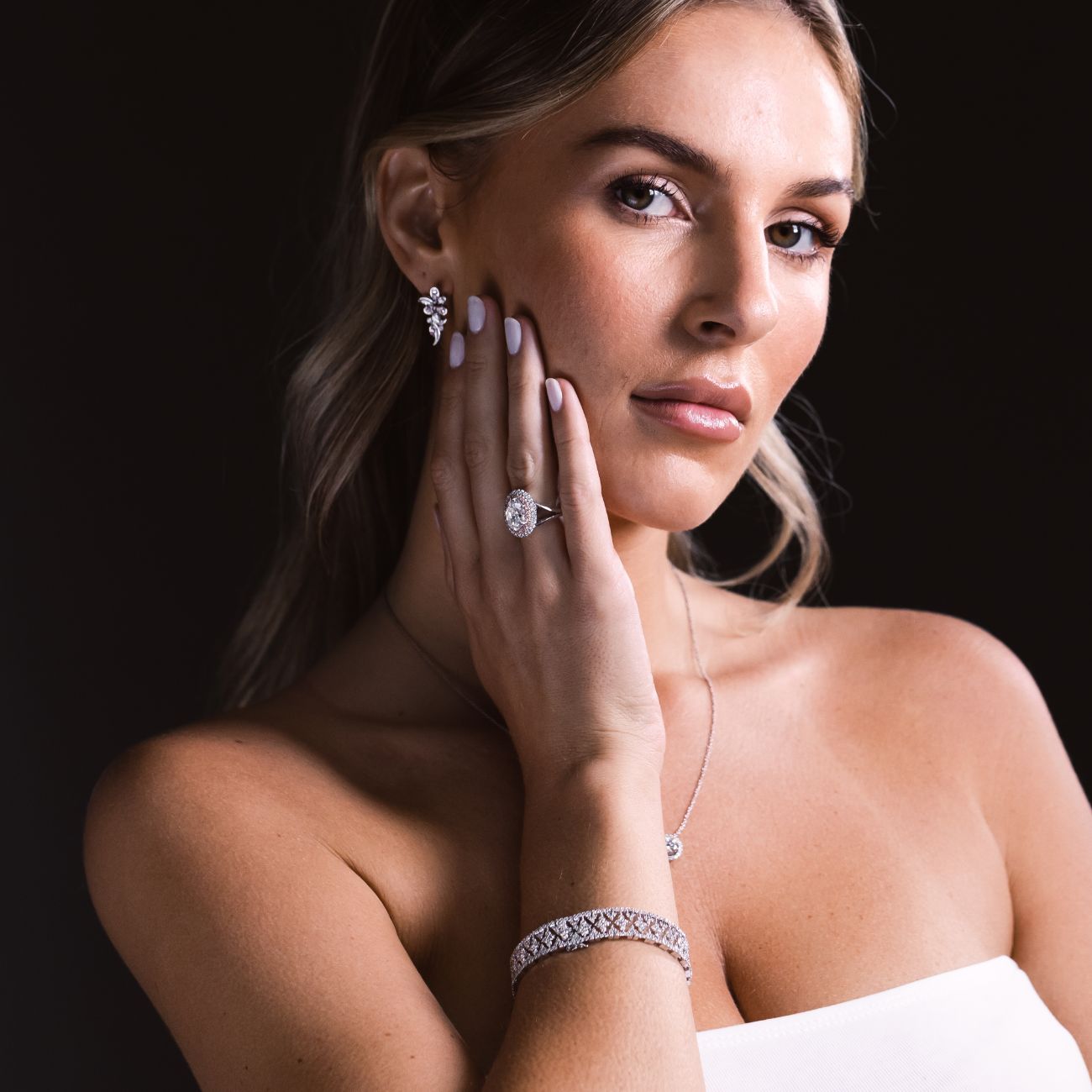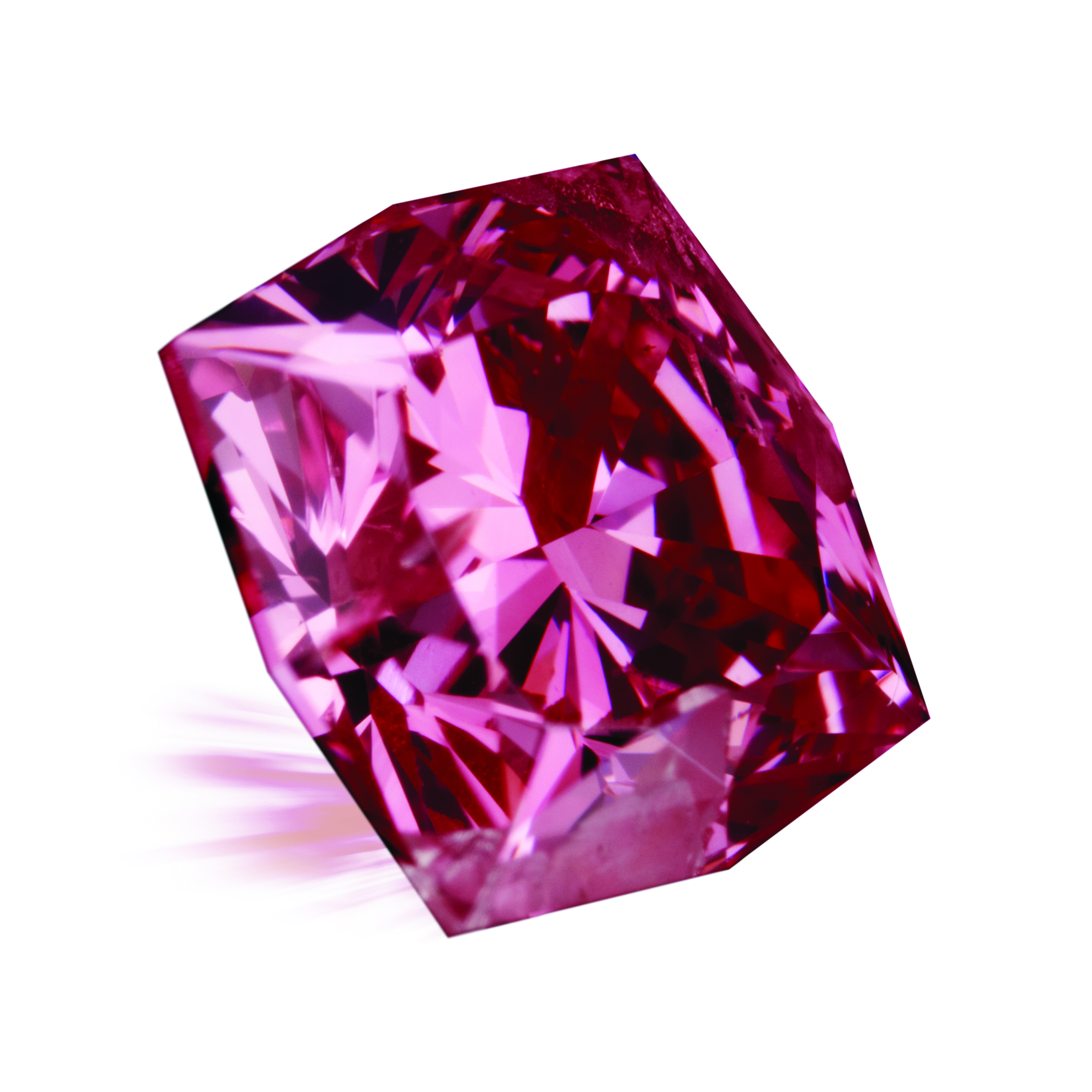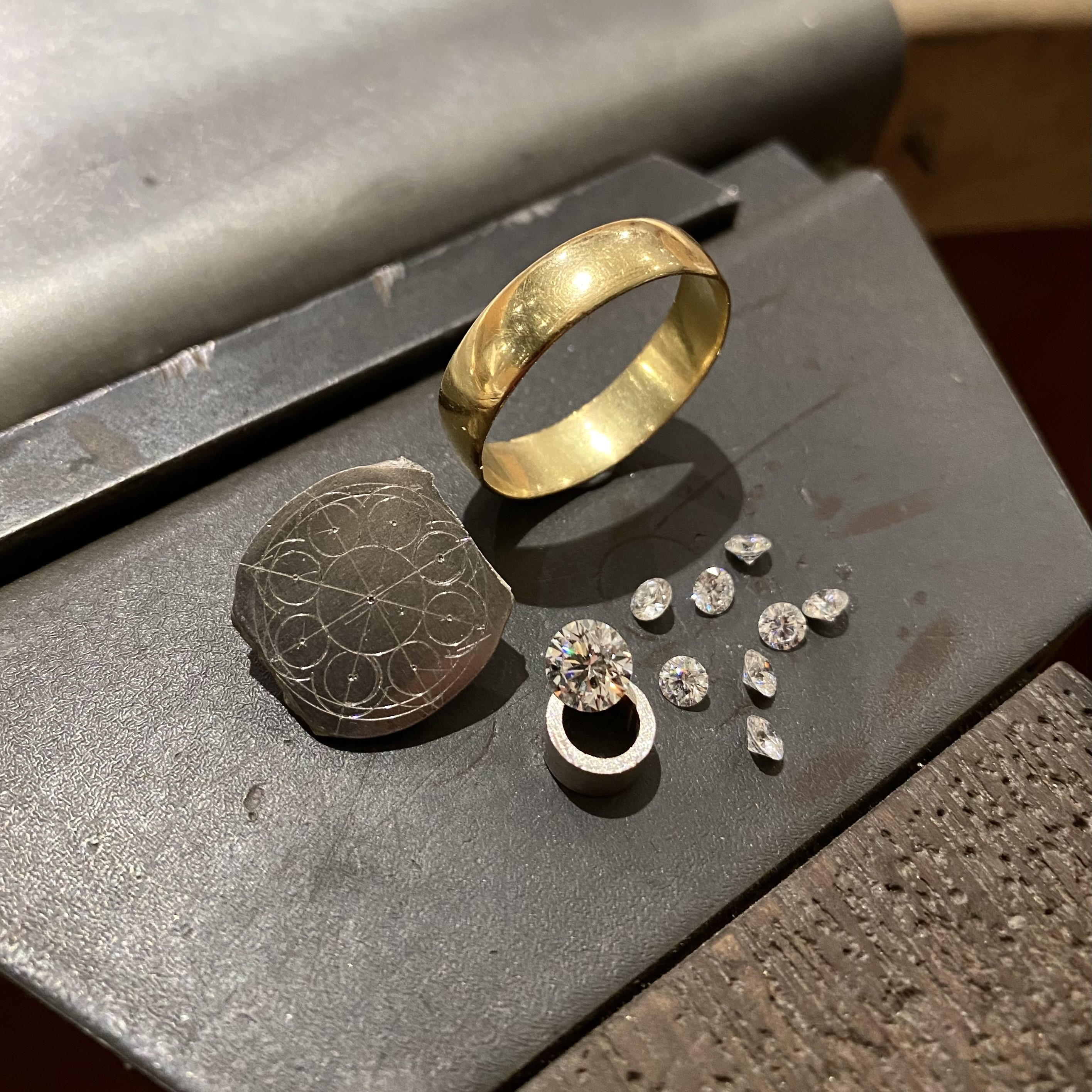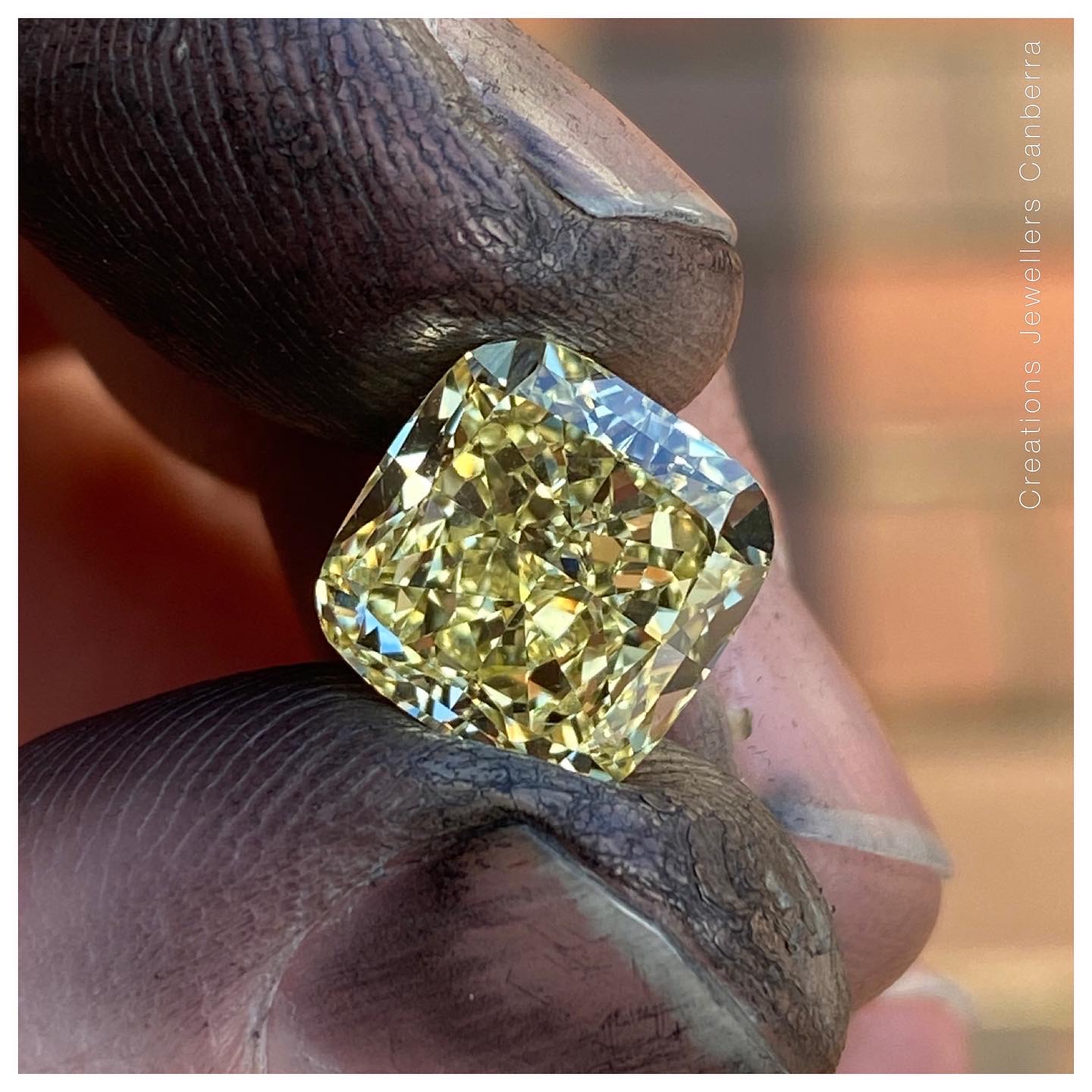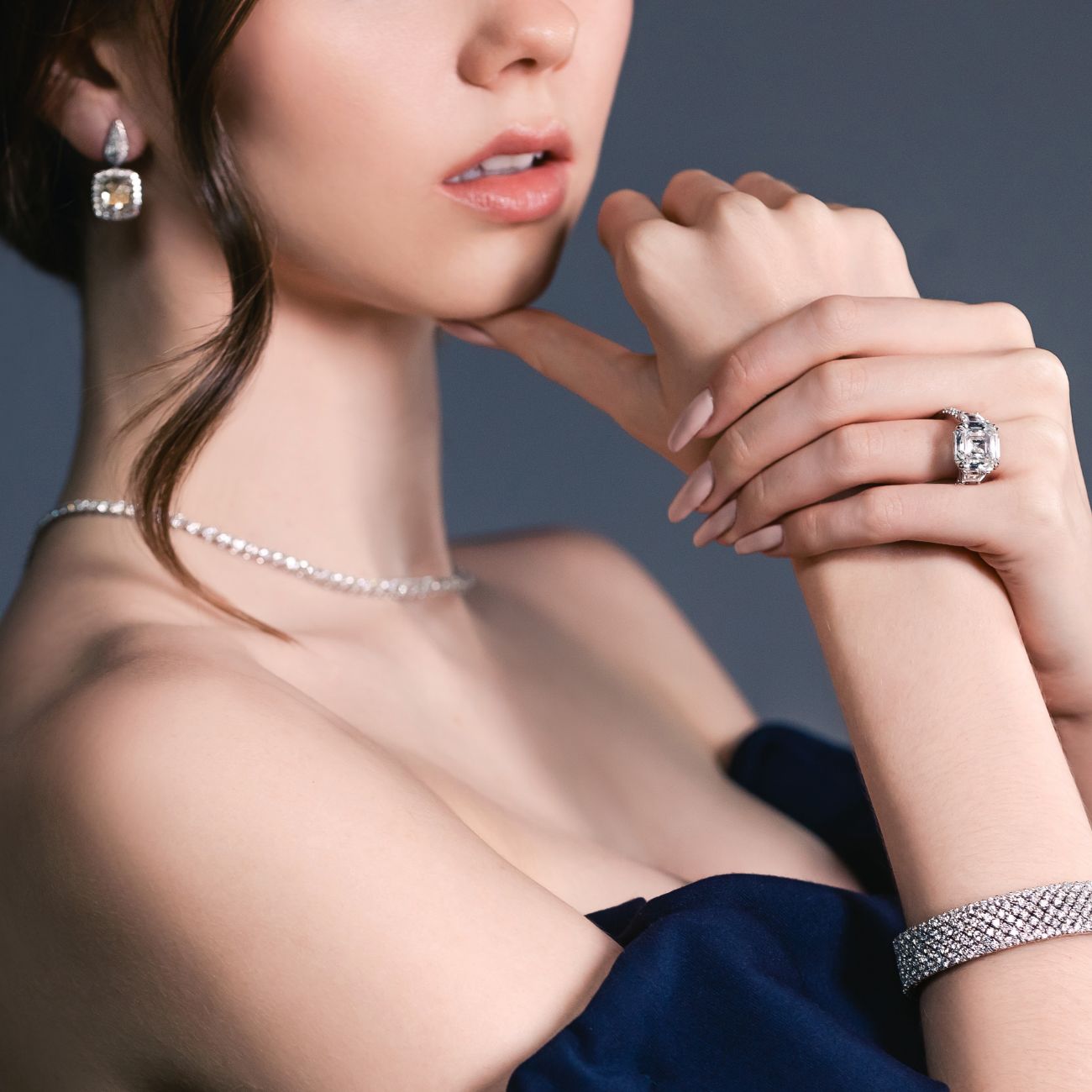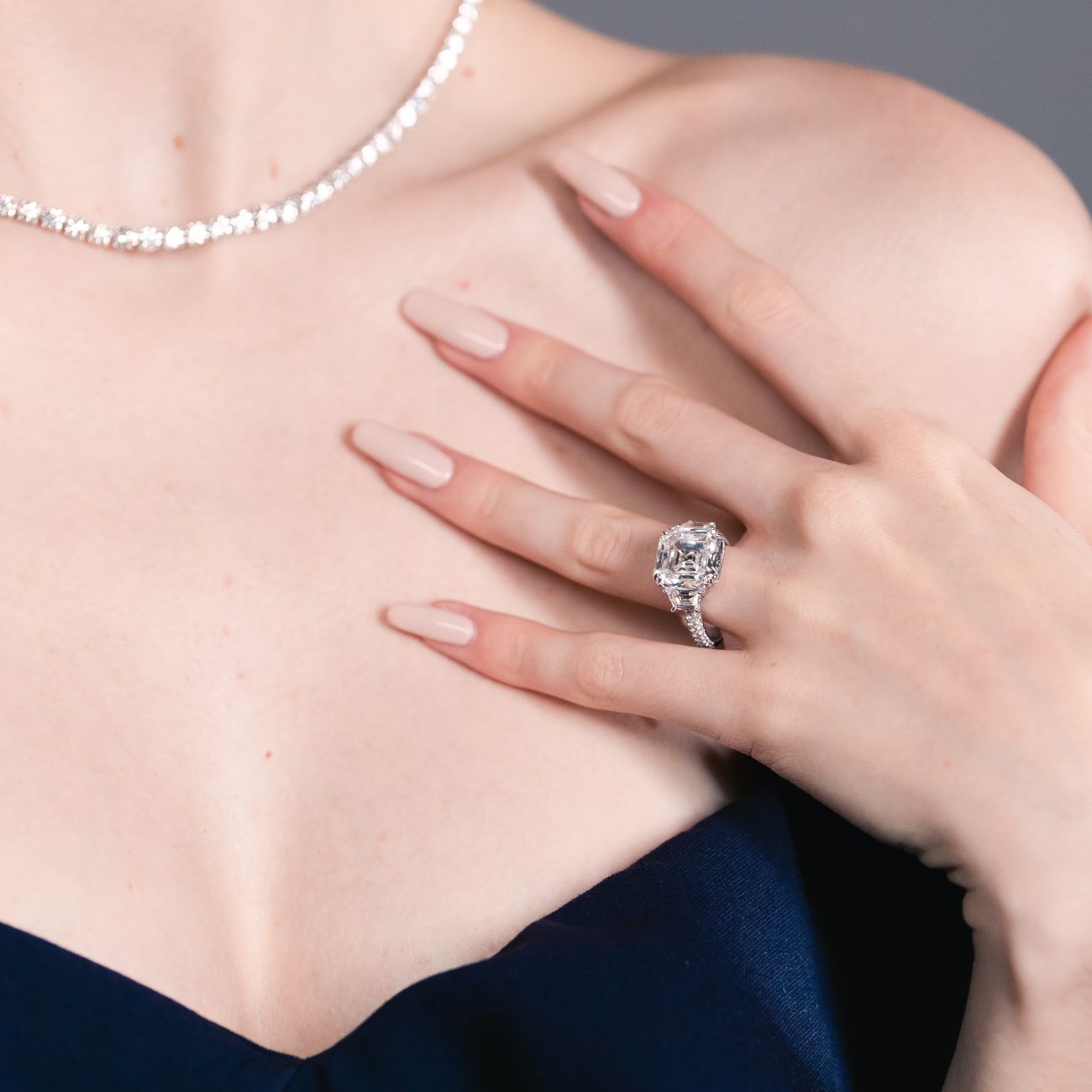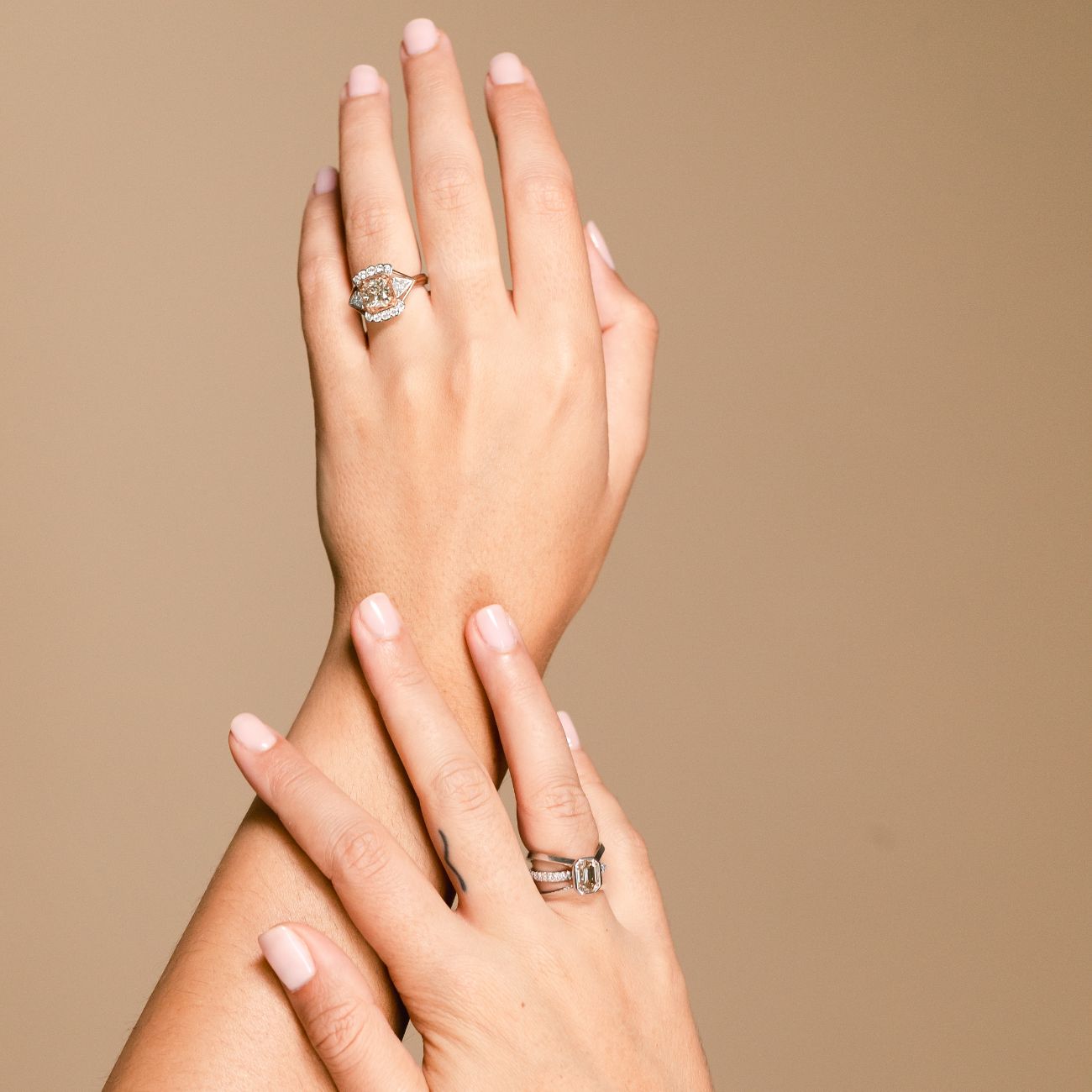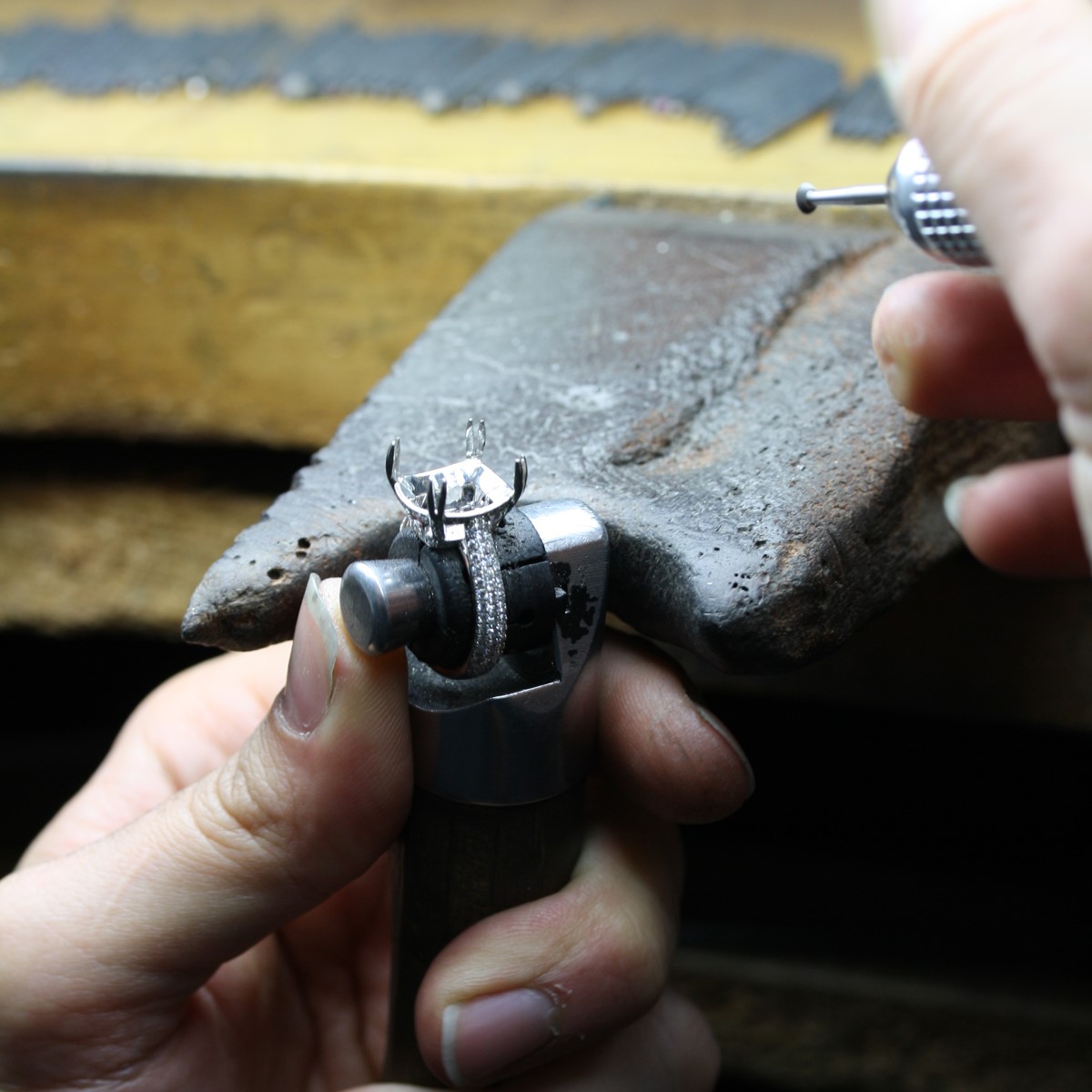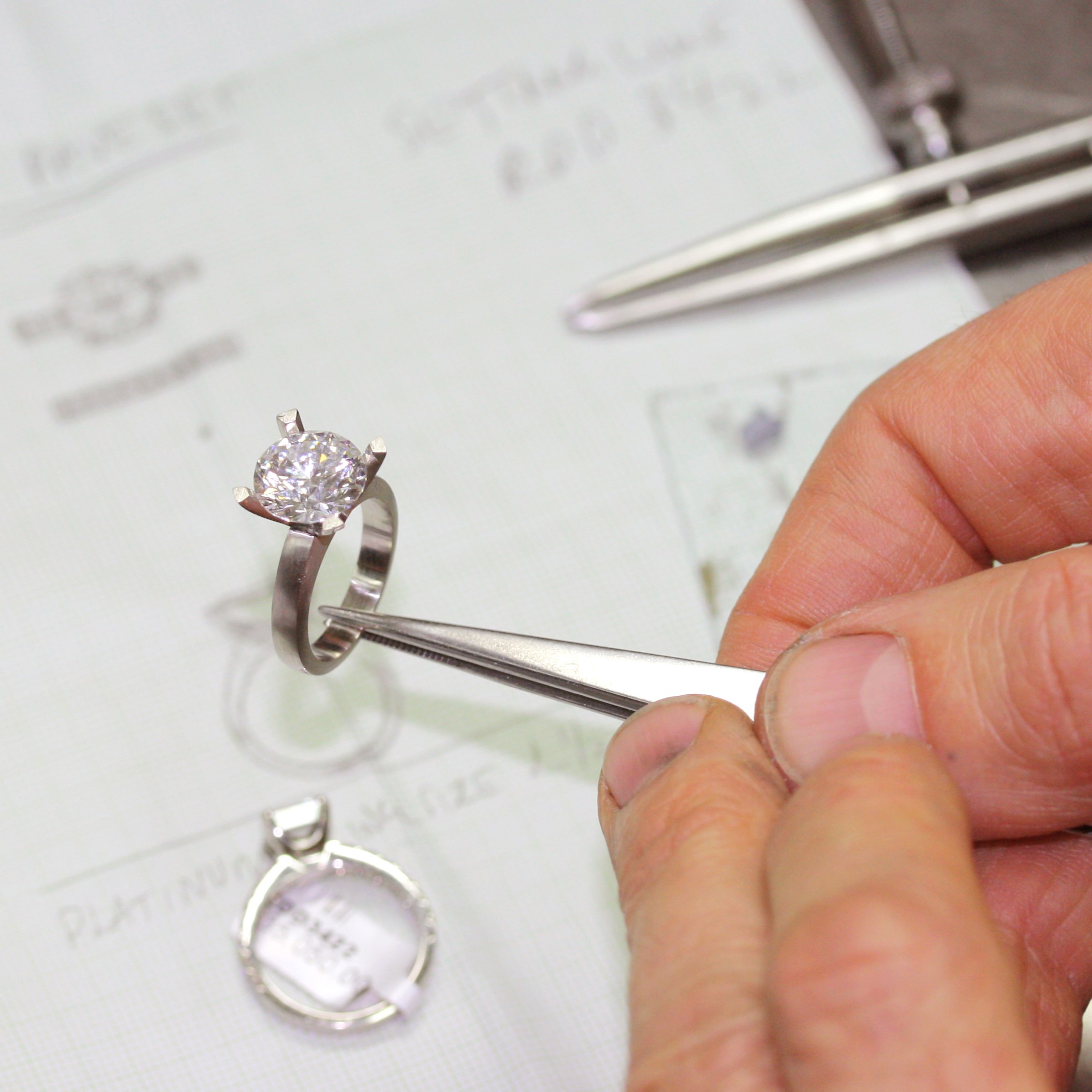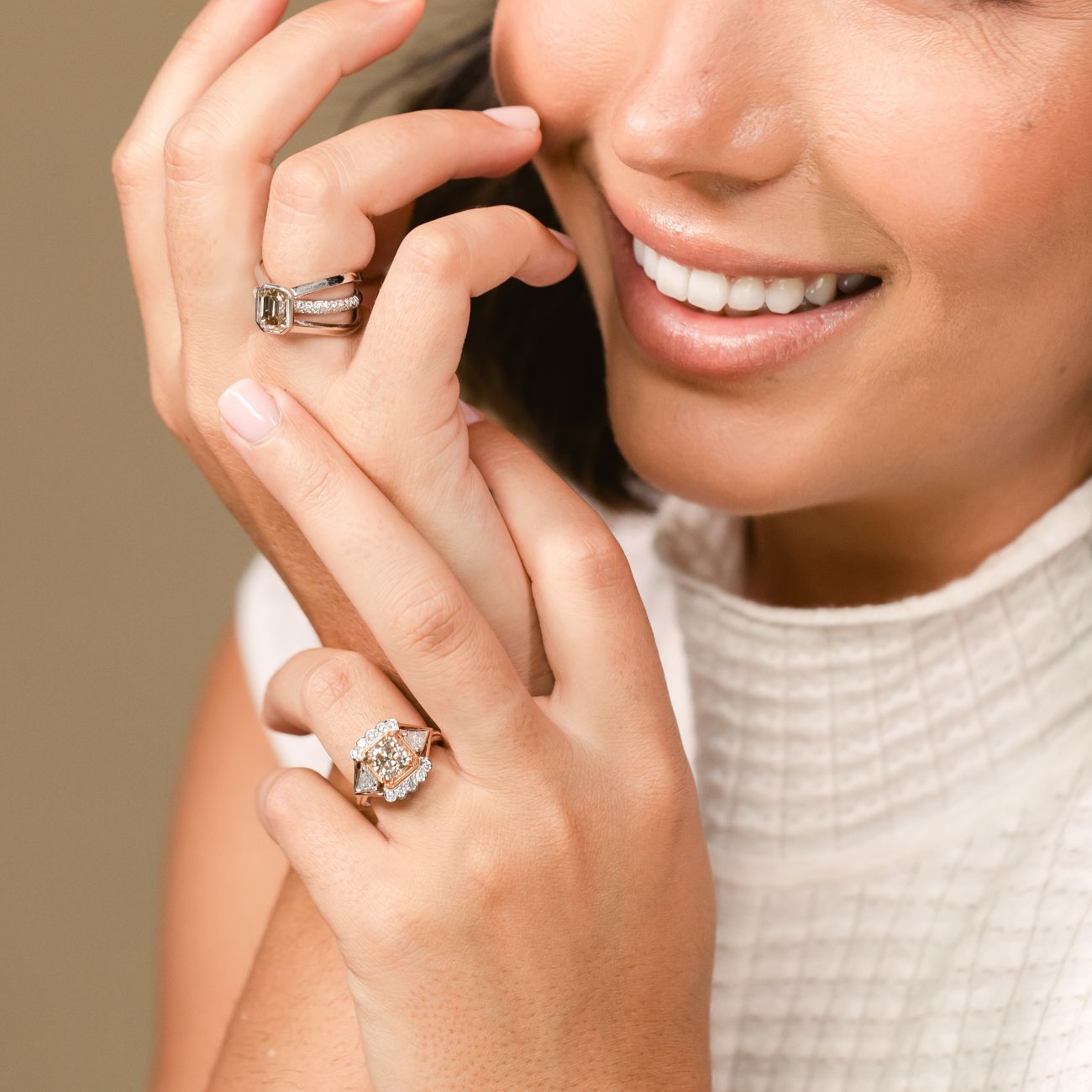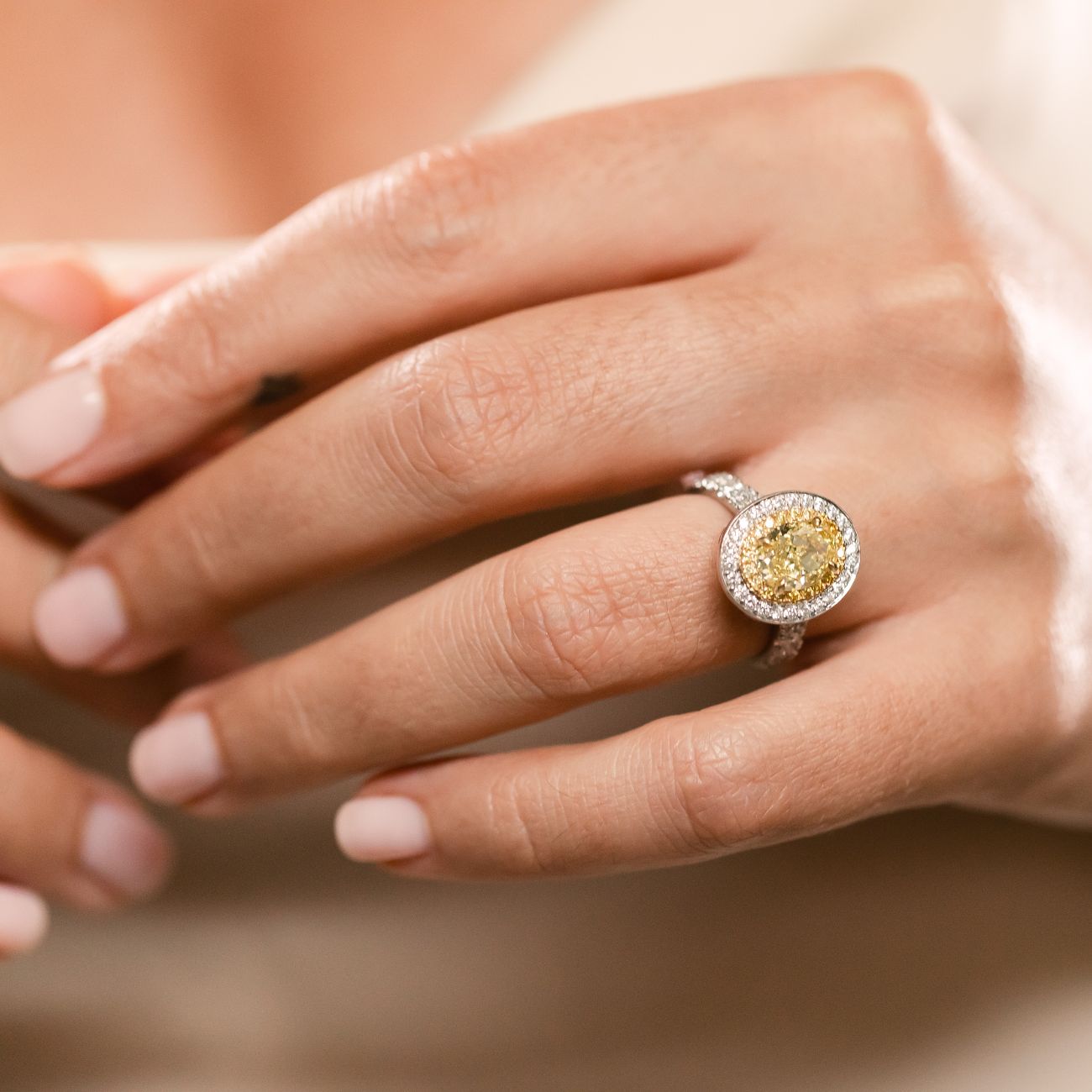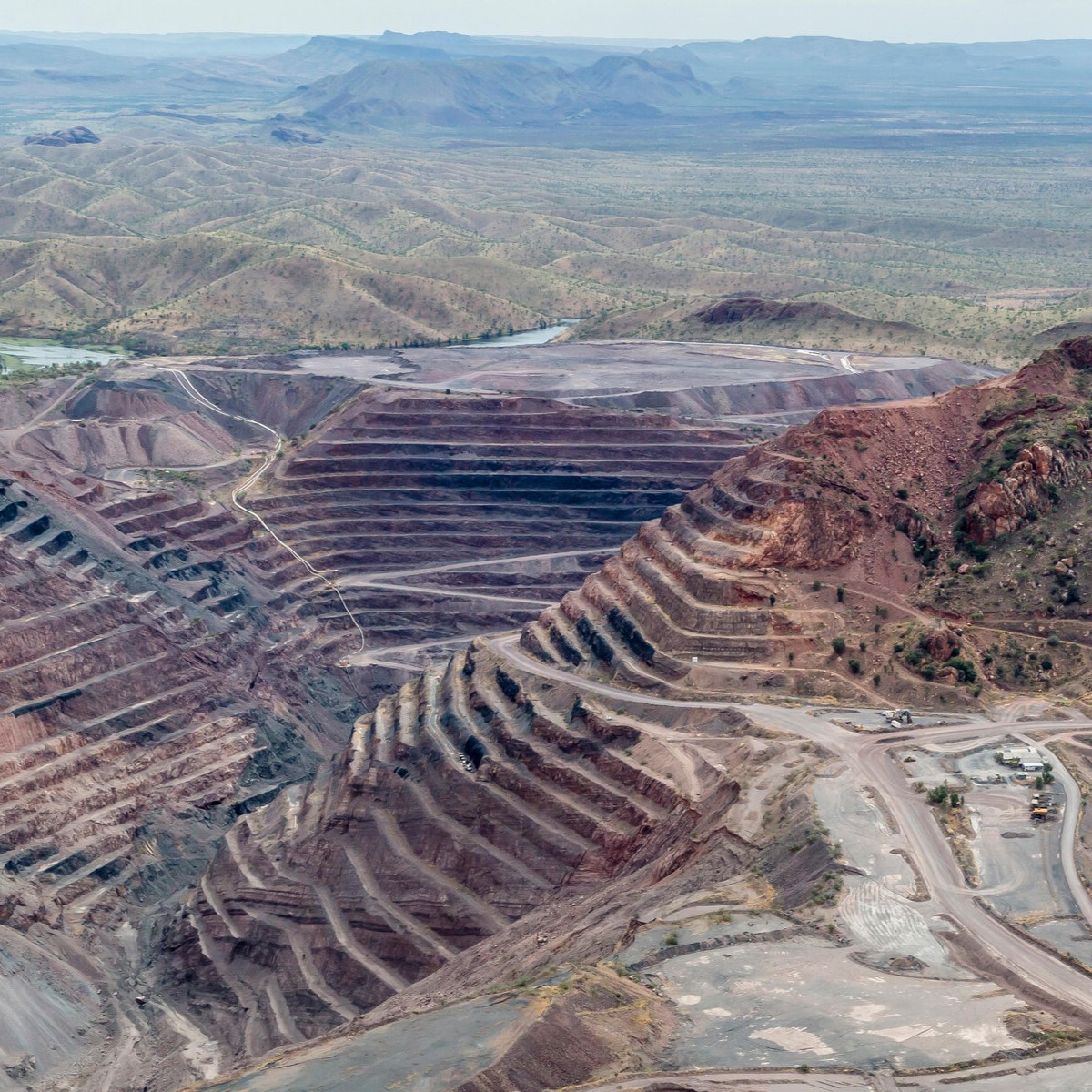Clarity
To comprehend diamond clarity, we must first comprehend diamond formation. Natural diamonds are formed when carbon is exposed to extreme heat and pressure deep down. This process can produce a range of internal and external characteristics known as ‘inclusions’ and ‘blemishes.’ The quantity, size, relief, nature, and position of these characteristics, as well as how […]
Colour
Understanding the meaning of diamond hue aids in the selection of the ideal diamond. Surprisingly, the absence of colour is used to assess the hue of most gem-quality diamonds. Like a drop of pure water, a chemically pure and structurally perfect diamond has no colour and thus a higher value. The GIA’s D-to-Z diamond colour-grading […]
Cut – Anatomy of a diamond
People frequently associate “cut” with a diamond’s shape rather than its cut quality. Cut refers to a diamond’s dimensions, symmetry, and polish, which constitute the cut quality or fourth ‘C’. Table Size: The table is the diamond’s top horizontal facet. The average table size is calculated as a percentage of the girdle diameter of the […]
How do you learn to grade diamonds?
Diamond grading is a detailed evaluation of a gem by a qualified professional using the Gemological Institute of America’s 4 Cs system or the American Gem Society’s AGS 0–10 grading scale. You must take a course from a recognised authority in the industry, such as the Gemological Institute of America, to understand how to grade […]
What is the best letter grade for a diamond?
D (colourless) is the highest and best grade on the letter-grade diamond colour scale, while Z is the lowest. The D colour grade is the highest quality colour grade a diamond can achieve, and it is sometimes referred to as a diamond’s “best colour.”
Which diamond clarity is best?
FL, or flawless, is the highest clarity rating for a diamond. Even when examined at 10x magnification, the GIA only grades a diamond as perfect if it has no flaws or blemishes visible to a skilled grader. Things get a little more challenging and subjective when it comes to determining the appropriate clarity grade for […]
Is VS1 or VS2 better?
A VS1 diamond has no eye visible inclusions and the inclusions are difficult to detect under 10x magnification. These diamonds account for less than 5% of all gem-quality stones. More readily detectable inclusions are only seen in VS2 diamonds around 5% of the time, and they are more common in stones exceeding 1 carat. VS2 […]
What are the grades of a diamond?
Colour Diamonds come in a variety of hues. Diamonds in the usual colour range range from colourless to light yellow to brown. Colourless diamonds are the most valuable within that spectrum since they are the rarest. They established the benchmark for grading and pricing normal colour diamonds. Clarity Internal features called inclusions and surface abnormalities […]
History and Development
There were a multitude of methods used to quantify and classify diamonds before the current diamond grading system was implemented. Diamonds were once graded using the letters A, B, and C to indicate their quality in the 1800s. By the late 1800s, diamond quality was denoted by numerals like as I, II, III, and IV, […]
What is the most expensive diamond?
Red Diamonds are the most valuable because they are the rarest. Pure red diamonds are extremely rare. The Mousaieff Red, a 5.11ct Pure Red diamond, is the most well-known red diamond.
How much do diamonds cost?
Diamond Carat Weight Price (Per Carat, Round Brilliant Cut) Total Price 0.50 carat $1,220 – $5,800 $610 – $2,900 1.0 carat $2,500 – $18,000 $2,500 – $18,000 1.50 carat $3,300 – $24,000 $4,400 – $32,000 2.0 carat $4,200 – $29,000 $8,400 – $58,000 3.0 carat $7,200 – $51,000 $21,600 – $153,000 4.0 carat $8,400 – […]
What are the largest diamonds ever found?
The Cullinan Diamond The stunning Cullinan diamond is the largest and possibly the most famous gem-quality diamond ever discovered. Sir Thomas Cullinan discovered the raw diamond in South Africa in 1905, and it weighed a massive 3106 carats. The Excelsior Diamond The Excelsior is the third largest rough diamond of gem-quality, weighing 995.20 carats. The […]
What are the most famous diamonds?
Here are six famous diamonds. THE CULLINAN 3106ct rough weight Origin: South Africa, Transvaal On January 26, 1905, the Cullinan, the world’s largest gem-quality diamond, was discovered at the Premier Mine. THE EUREKA 10.73 carat polished diamond, one of two cut from 21.25 carat rough Oval in shape Yellow is a brilliant colour. Unknown clarity […]
What were diamonds used for in the past?
Diamonds were employed as adornments, cutting tools, and talismans to fend off evil. They were also thought to bring protection in battle. Diamonds were also utilised as a medical remedy throughout the Dark Ages, and were considered to treat illness and heal wounds when consumed. Diamonds were thought to be Gods’ tears by the ancient […]
Diamond history facts
Diamonds are nearly as old as the world and form deep in the earth’s core over billions of years. Only a small percentage of diamonds survive the journey from the depths of the earth to the surface of the planet, where they can be mined. No two diamonds are alike, and each has its own […]
Diamond history timeline
Diamonds were first discovered in and around Indian rivers. Diamonds were a valuable commodity. Diamond drill-marked beads dating from the 4th century BC have been discovered in Yemeni archaeological sites. In the 13th and 14th centuries, diamonds first appeared in European jewellery. The initial attempts to polish the natural features and faults of the diamond […]
When was the first diamond found?
Natural diamonds were first discovered in India around the 4th century BC. The Silk Road, a network of trade routes connecting India and China, was used to carry the majority of these early stones. Diamonds were prized at the time of their discovery for their strength and brilliance, as well as their ability to refract […]
History of diamonds as jewellery
Diamonds have a long history of being desired objects. “A diamond is the most valuable, not just of precious stones, but of all things on this earth,” wrote Roman naturalist Pliny in the first century AD. The world’s fascination with diamonds began in India, where diamonds were mined from rivers and streams. According to certain […]
Diamond Production in 2020 by Country
The top countries in the world that produce diamonds are shown below, based on data from the USGS minerals commodities summary. Country and Diamonds (carats) Russia 23,000,000 Botswana 16,000,000 Canada 13,000,000 Angola 8,500,000 South Africa 7,700,000 Democratic Republic of Congo 3,700,000 Namibia 1,900,000 Lesotho 1,100,000 Australia 340,000 Tanzania 260,000 Brazil 250,000 Zimbabwe 250,000 China 230,000 […]
How do I identify natural rough, raw & uncut diamonds?
Here are some things to look for while identifying raw diamonds. 1. Concentrate On Gravity If you’re looking for a rough diamond, you should be aware of its specific gravity. The density of a diamond varies between 3.5 and 3.53 g/ml, which is the ratio of the stone’s density to a pure liquid with a […]
What does a diamond look like before it’s a diamond?
Before they’re cut and polished, diamonds look like hazy pebbles. For centuries, their chemical makeup and structure remained unknown. Diamonds were initially discovered to be made up of carbon, the fourth most abundant element, thanks to Isaac Newton’s investigations in the 1600s. Carbon, it turns out, exists in two common forms, both of which have […]
What does a diamond look like when it is first found?
Diamonds in their natural state are uncut and unpolished. In other words, they haven’t been tampered with or changed since they were discovered. Diamonds in their natural state resemble clear stones with yellowish or brownish hues. Colourless varieties exist, but they are less common.
How do you identify diamond rock?
Uncut rough diamonds look like water-worn quartz pebbles, but they can be differentiated by properties such as crystal structure, specific gravity, hardness, and other distinguishing qualities. Diamonds have an isometric crystal structure, a specific gravity of 3.1–3.5, a Mohs hardness of 10, cling to a grease table, and glow under shortwave ultraviolet light in some […]
Where in Australia are diamonds mined?
The Argyle Mine in Western Australia’s East Kimberley region is Australia’s largest and most profitable diamond resource. It began production in the early 1980s and held the title of world’s largest diamond mine by volume for several years. The largest diamond found so far in Australia was mined at the Merlin Mine, Northern Territory, in […]
What countries are diamonds found?
In 35 nations, natural diamonds have been discovered. Australia, Botswana, Canada, Angola, Russia, and South Africa are among the countries that produce gem quality diamonds.
